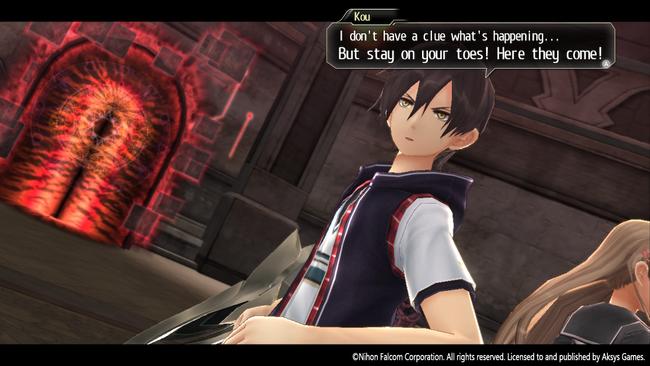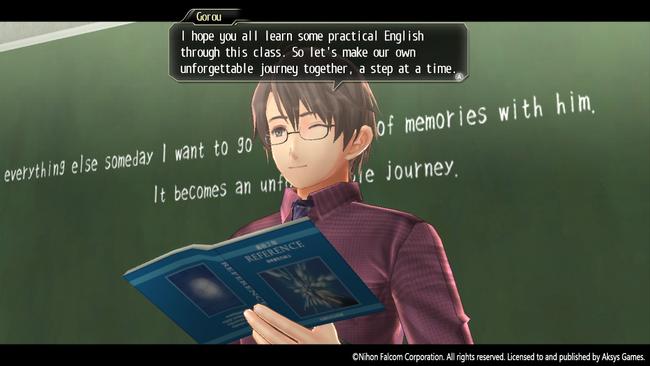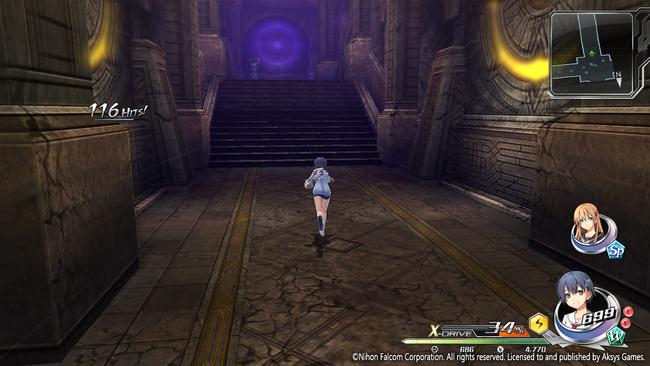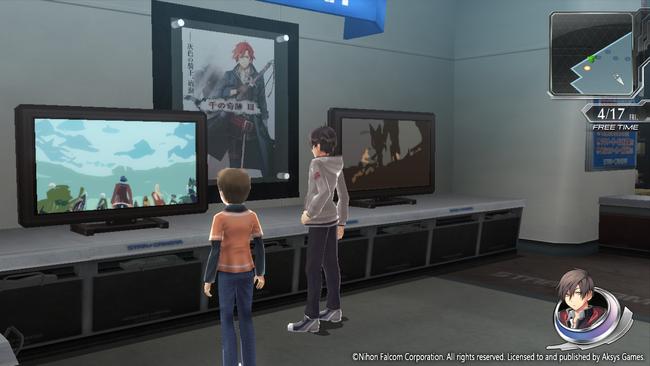
Tokyo Xanadu eX+ on Switch is now the best version... in English at least
We lived in a different world when Tokyo Xanadu originally launched in 2015. Falcom didn’t have as much recognition worldwide, Japanese games would often take months or years to come west, and the Nintendo Switch had yet to come out and dominate portable gaming. Tokyo Xanadu was relatively popular in Japan, enough to get an expanded port on PS4, but would take about a year and a half after to come out in the west.
My thoughts on Tokyo Xanadu more or less line up with our previous reviews for the Vita and eX+ versions, but I am genuinely fond of the game. TX is a true relic in so many ways, representing a move between eras for the company. Cold Steel III would kick off a new era of Falcom games in a new engine, sunsetting this specific engine with this game and Ys VIII. We only just saw the final game used in that engine come out last year in the west: Trails into Reverie.

Now that they have started porting their games in-house to Nintendo’s nearly 8-year-old console — and with a franchise follow-up on the horizon — Falcom recently brought the expanded eX+ version to Switch in Japan. Compared to the original Vita version, eX+ featured many new gameplay mechanics, a bump in resolution & framerate, new story chapters, and quality of life improvements.
Although we once again had to wait, the new Switch version of Tokyo Xanadu now makes its way to English audiences this month. However, as far as the English release goes, this is not quite just a Switch port. Aksys’ localization announcement came with an interesting addition: that the script would be receiving a new translation, which instantly piqued my interest. I don’t know if I’d call the original English script “poor” as much as I’d call it flat. Characters feel like they speak with a single, shared voice. It’s a very inconsistent localization that did the game no favors.

While the game itself is divisive, I’ve always been in its corner. I don’t think it does anything groundbreaking, but it’s a fun RPG that fully leans into the anime inspirations. I don’t mean that superficially either. Each chapter is episodic in nature and starts by playing the game’s brilliantly 2D animated opening. It feels innocent and playful, with characters and a narrative that are easy to enjoy if you just let yourself do so. It feels like it’d fit in nicely with the 2010s era of season anime, but with the attention to detail in its world and cast you’d find in a Falcom game. If ever there was a game I'd call "plucky", it'd be this one.
So having a new script that doesn’t hinder that is fantastic, and I think it delivers. The number of ellipses has been reduced… significantly. They still exist of course (probably just part of the original writer’s style), but there are far fewer overall. I spent the prologue chapter comparing the two, and almost every single line has been changed. I’d argue that all of them were improved as well, and the script is comparable to the modern standards of localization Falcom games have seen in recent years.

The port itself is frustrating to talk about, I’ll be honest with you. I love reviewing Switch ports, because usually the hardware often is not strong enough to run most games on it seamlessly. There are several technical reasons I could get into on why that is, but let’s just go with the system being old. Developers often have to be tricky into getting games running well on it, even some that seem like surefire successes. Switch ports will often lay the work bare, and I find it fascinating to see them do their best to function at all.
But, this is one of those ports that really just works. That just makes sense of course, this is a Vita game at it's core The porting is entirely invisible, because this is just Tokyo Xanadu eX+ on Switch. The resolution looks native, the framerate hits 60 with only rare dips (often when several abilities are popping off at once), and it has all the DLC included (at least to my knowledge). There are really no notable porting issues to bring up, because either in docked or undocked play this is a really good version of the game. That’s right, I’m sad I can’t yap about Switch port concessions. Bravo, Falcom.

As someone who really enjoys the aspect of just existing in a 3D game space, who always felt the setting was one of the strongest aspects of Tokyo Xanadu, my favorite new addition might seem odd to some of you. While exploring town you can see in-universe advertisements for other Falcom games. eX+ had posters for the then-upcoming Sen no Kiseki III/Trails of Cold Steel III, among fun teases for no nonexistent games. Estelle has an arcade game, and there’s a tease for a fake Ys vs Kiseki game with Rean and Adol. You can see magazines with Crossbell characters on them. Cold Steel 2’s exact fishing mini-game is just something you can play. So you have no idea how surprised I was to see that all of these references have been color-swapped.
That’s right, we have a Cold Steel III poster with a red-haired Rean. There’s a purple Adol. A green Lloyd. Blue Crow. I was initially laughing at the idea that this was from Tokyo Xanadu having a different publisher in the west than the Trails games, but the reality was so much more interesting. This was a Falcom choice that also existed in the Japanese release. See, that made me laugh even harder. With the Trails games being fiction in this game’s universe, and the games it is advertising no longer needing to be advertised, this was a fun way to revisit that idea. I personally find it amusing, because they probably only did it because they thought it would be funny. I hope they double down in the game’s sequel.

In some respects, revisiting Tokyo Xanadu in a post-Daybreak world was a bit of a challenge, I must say. This is definitely a Vita game from the 2010s, and my muscle memory from my current playthrough of Daybreak kind of messed with me more than a handful of times. Your run button is set to the left bumper instead of your right by default, and your map hotkey (hot… button?) being Select instead of down on the d-pad. That first one caused a handful of issues as well, since that button also fast forwards cutscenes. In the early hours, I found myself accidentally blasting through cutscenes in dungeons after specific fights. However, not only is there full button remapping available, but there are also four preset control methods. A new scheme for this port by default, one for a “definitive action game experience”, one that lets you reset the camera with a face button, and then one mimicking the original eX+ controls.
In terms of general story quality, there’s a stark contrast coming right off the high of Daybreak. They are truly different beasts, but in a strange way, enjoying Daybreak so much has made me even more receptive to what Xanadu was doing. Daybreak makes such a massive leap forward into making true console RPGs for Falcom, it makes this game seem quaint in comparison. Whenever I'd be overwhelmed by how cool of a game that is I would take some time to play an hour or two of Xanadu to see how far they’ve come. Perhaps this feeling was driven mainly by nostalgia for this era of games, because I cut my teeth with RPGs in the early 2010s, but it was great all the same.

I got a lot of value at seeing Falcom put their all into a take on the juvenile school-themed RPGs popularized by the Persona series, at a time when Persona 5 didn’t even exist yet. It is truly just doing its own thing, content in its own lane. The city maps are particularly fun to run around in, with colorful NPCs sprinkled throughout. There’s a lot of ambition here for the time and hardware they were working with, and the eX+ version just builds on that further. The outstanding soundtrack works best in these moments, and I still hum its world map themes in my head often without even remembering where it came from. I’d be remiss if I didn’t mention golf course skateboarding as well, which I love just for the absurdity of the minigame.
The combat itself was less fluid than I remember, but I think the staggering number of options on hand makes up for any stiffness in how your characters feel to control. This is surely no Ys VIII, but as a mechanical combination between the Ys and Trails games of that era, it works. Dungeons are solid and varied, and the game actually offers a decent challenge to match all the tools in your arsenal. There might be an adjustment period for newcomers, but stick with it and there’s more than enough to enjoy on offer.
Tokyo Xanadu still feels like a Vita game regardless of what systems it gets ported to, but I don’t really see this as a fault. I can only imagine how Ys VIII might have shaped up on Switch if Falcom had been in charge of porting it, because this truly is just eX+ on another system. There really shouldn't be any reason this game doesn't run great on Switch, and they delivered. This game was fun when it came out, and is now easier than ever to enjoy for the west. With the first two Cold Steel games apparently never making it over in the West on this platform (yes those games did receive Switch ports in Japan), this is the perfect time capsule for that generation of games. You'd certainly get a much nicer looking experience on more powerful hardware, but I think this new Switch version makes a compelling case on why you should play it here. With the new high-quality English script, this is currently the best way to play this game in English. I hope the new translation can make it over to other platforms someday, but as of now, I have no qualms recommending this version of the game.
Disclaimer: A copy of this game was provided to RPG Site by the publisher.